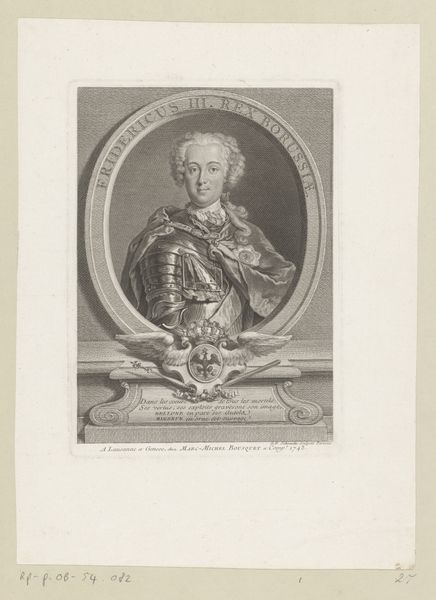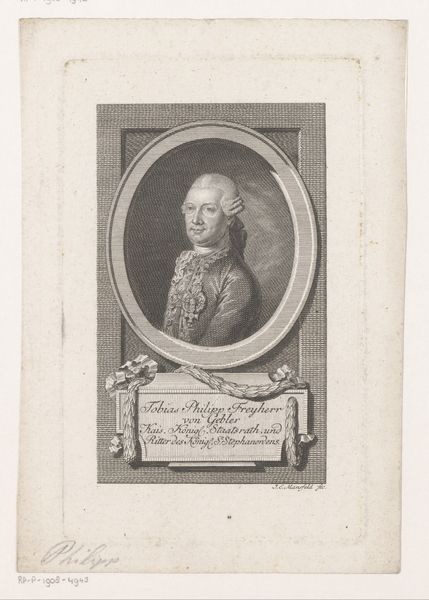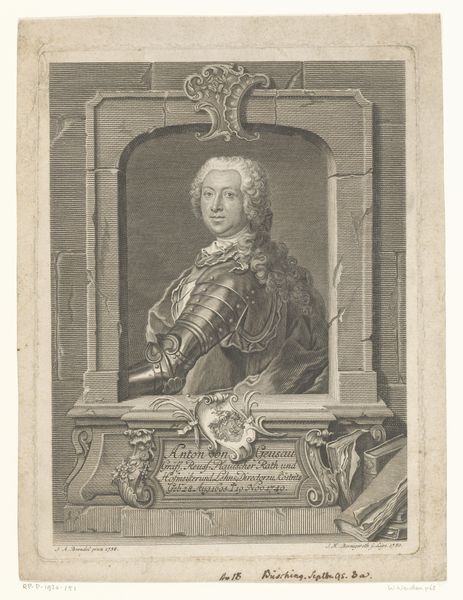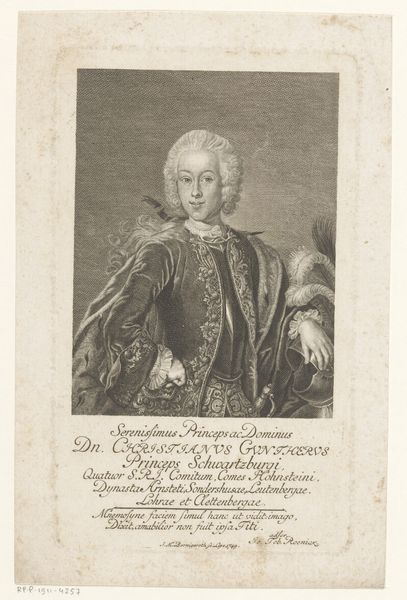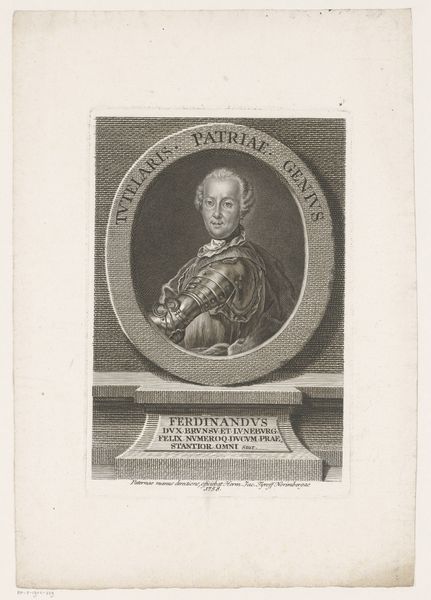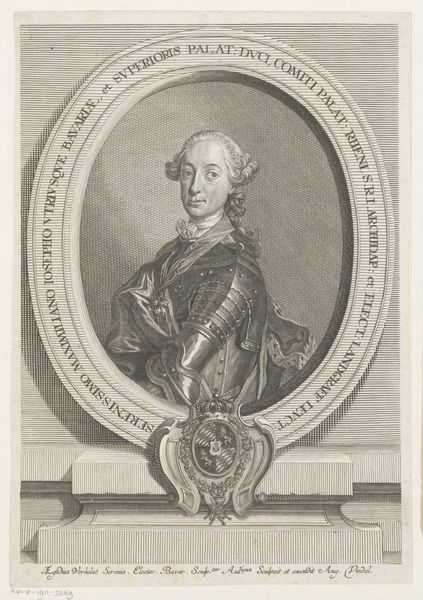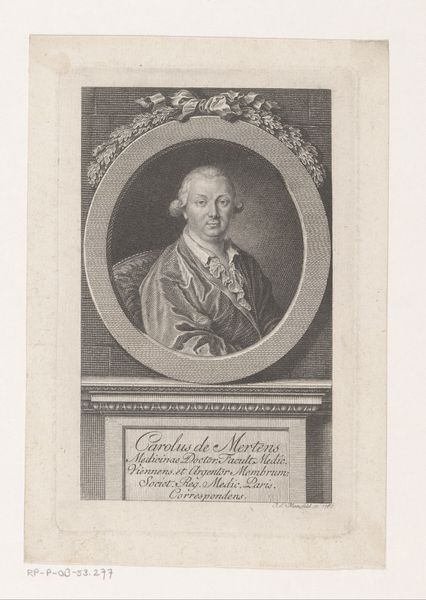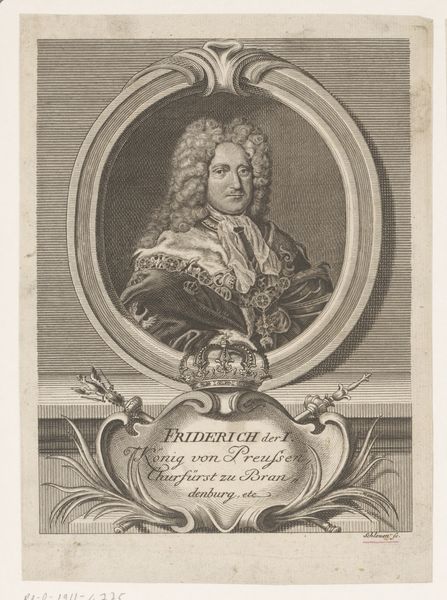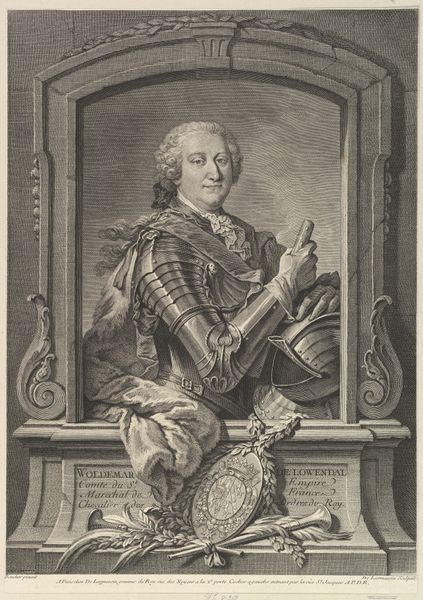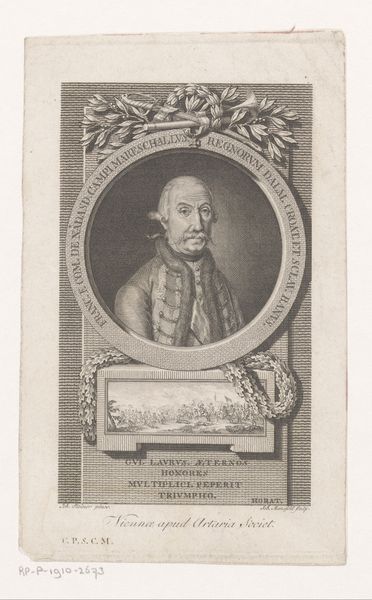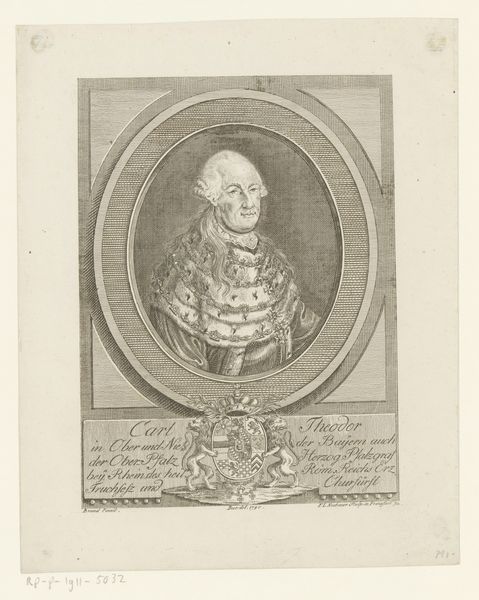
engraving
#
old engraving style
#
classical-realism
#
framed image
#
history-painting
#
academic-art
#
engraving
Dimensions: height 139 mm, width 88 mm
Copyright: Rijks Museum: Open Domain
Curator: Immediately, I see ice. Not literally, of course, but the crisp detail, the almost photographic precision of the lines, it gives me a sense of a subject frozen in time. Editor: Indeed. What we have here is an engraving, a "Portret van Ferdinand I der Beide Siciliën"—Ferdinand I of the Two Sicilies—dating back to the period of 1754-1828. It exemplifies classical realism and academic art, perfectly encapsulating the style prevalent during his reign. Curator: The detail in the armor is remarkable! And that almost hesitant look in his eyes... there's a story there, wouldn't you say? It feels like he's almost surprised to be a king, or perhaps burdened by it. Editor: Perhaps! It's crucial to consider the role such images played at the time. These weren't casual snapshots; they were carefully constructed pieces of political theatre. This image reinforced the idea of Ferdinand’s authority—armour as a symbol of strength, the formal pose demonstrating royal composure. Curator: Do you think people truly saw him this way, or was it just… branding, so to speak? Did they ever see past the armour? Editor: That's the million-dollar question, isn't it? Engravings like these were reproduced and disseminated widely, creating a specific public persona. We are peering into a historical example of constructing and maintaining power. His subjects would receive images that told the story of the kingdom and their king. Curator: Interesting! I hadn't thought of it that way before, like carefully managed PR. Makes you wonder what kings are doing in the digital age now, right? Editor: Exactly. What Ferdinand and his printmakers did back then is the equivalent of curated social media campaigns and meticulously planned photo ops. Curator: I always get lost in the personal angle. But I’m very intrigued by your interpretation, though. Thanks for helping me thaw it all out. Editor: Likewise! Context shapes so much, and seeing these prints in this new way allows us to comprehend Ferdinand, his kingdom and era, but maybe even glimpse into the history and politics that surround us in our age.
Comments
No comments
Be the first to comment and join the conversation on the ultimate creative platform.

